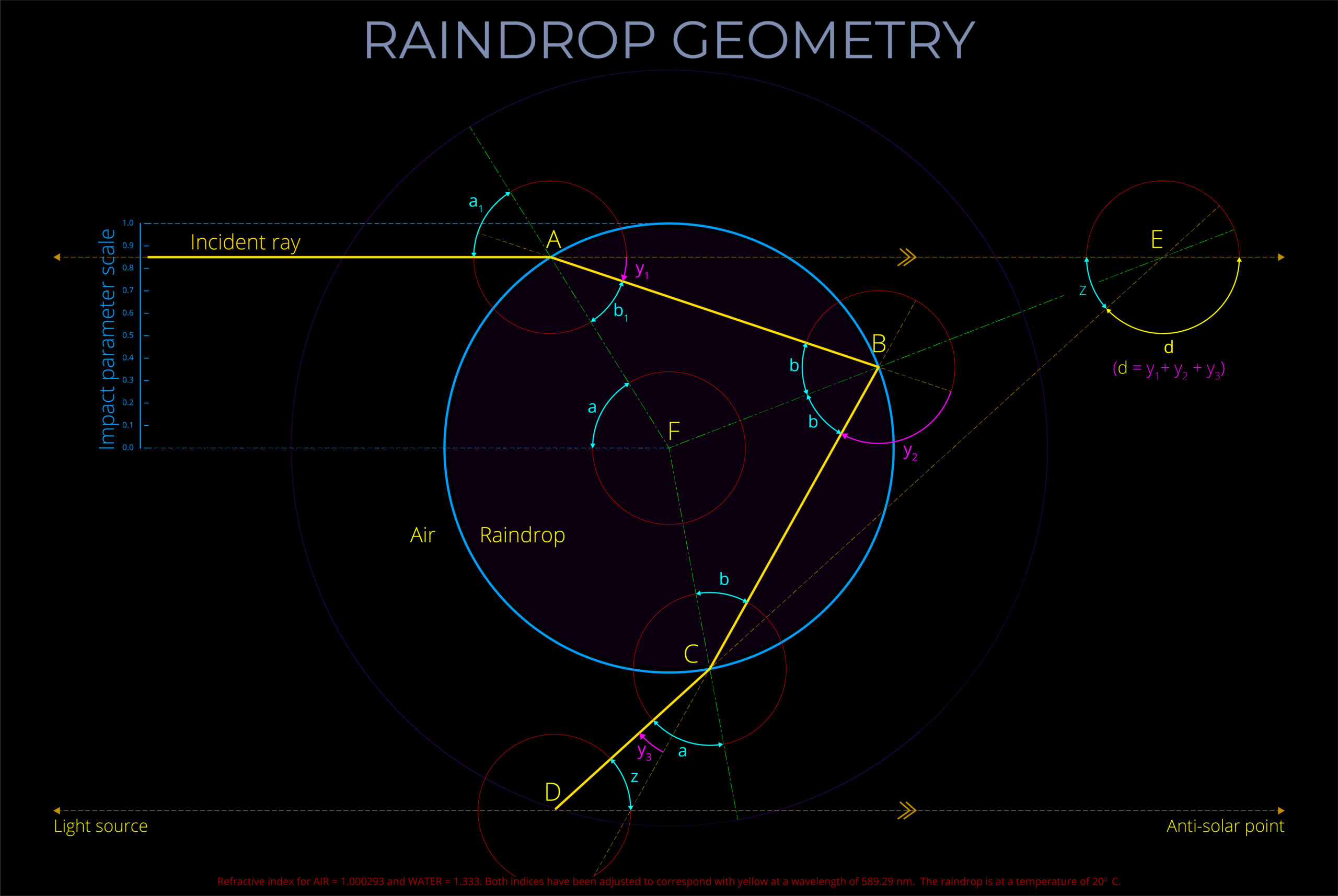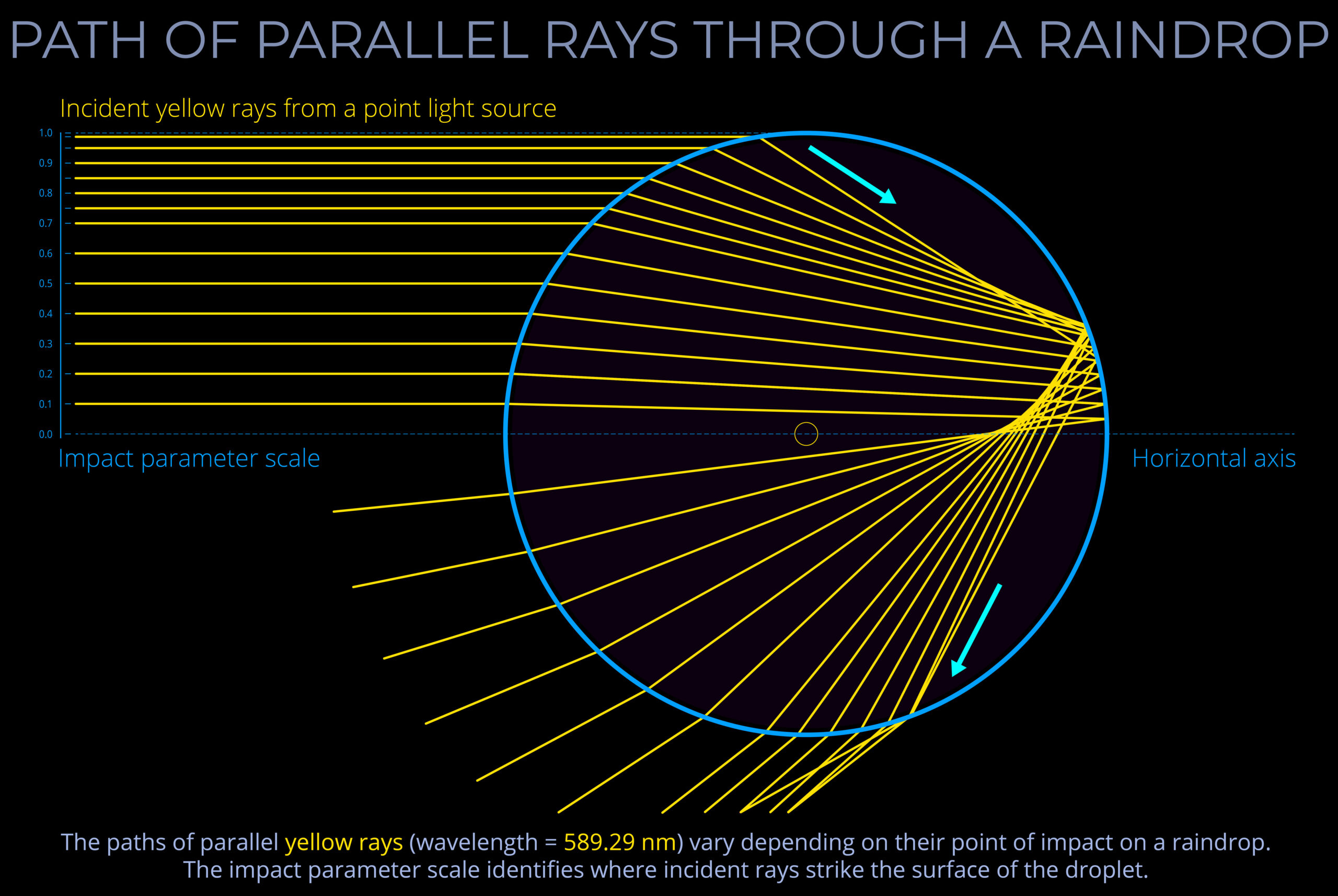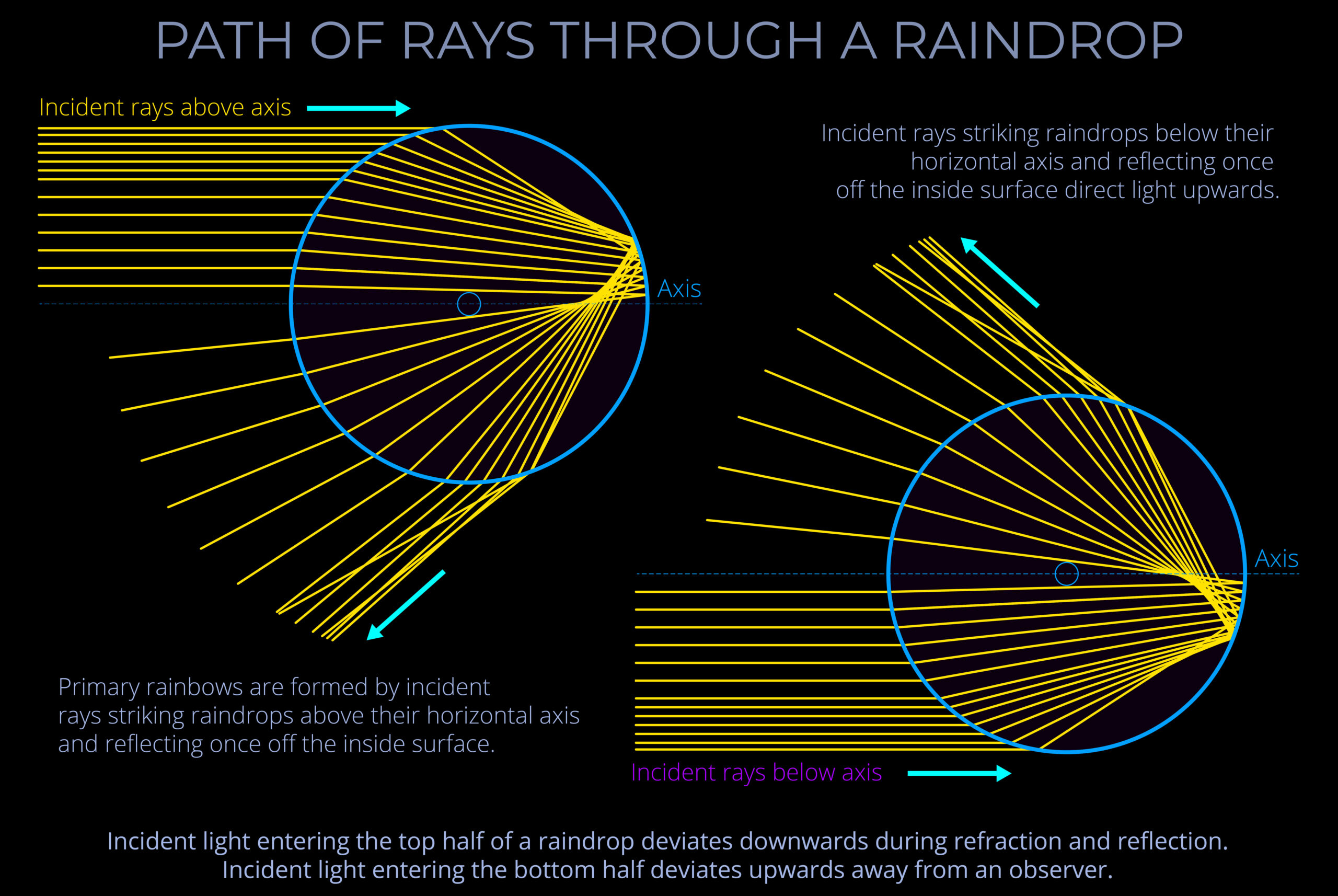A raindrop is often represented as a geometrically perfect sphere. This is an idealized form that rarely exists in the real world. The simplification aids in comprehending the physics of rainbows, even though real-life raindrops seldom maintain such perfect spherical forms.
- The understanding derived from studying the idealized geometry of raindrops can be applied to every rainbow even though:
- The shape of a real raindrop is highly variable and depends on factors including size, speed of descent, and turbulence.
- Each rainbow observed in our daily life and the arrangement of droplets within it is unique due both to chance and to a wide range of environmental factors.
- By way of summary, the form of a rainbow and the arrangement of raindrops within it depends on a variety of unique and changing conditions. These include the size, shape, and arrangement of the raindrops that make up the rainbow, as well as the position of the sun, the observer’s location, the clarity and composition of the atmosphere, and the presence of any other light sources or reflective surfaces. So, each rainbow that we observe is unique, shaped by both random variations and a wide array of environmental factors.
About light rays
- A raindrop is often represented as a geometrically perfect sphere. This is an idealized form that rarely exists in the real world. The simplification aids in comprehending the physics of rainbows, even though real-life raindrops seldom maintain such perfect spherical forms.
- The understanding derived from studying the idealized geometry of raindrops can be applied to every rainbow even though:
- The shape of a real raindrop is highly variable and depends on factors including size, speed of descent, and turbulence.
- Each rainbow observed in our daily life and the arrangement of droplets within it is unique due both to chance and to a wide range of environmental factors.
- By way of summary, the form of a rainbow and the arrangement of raindrops within it depends on a variety of unique and changing conditions. These include the size, shape, and arrangement of the raindrops that make up the rainbow, as well as the position of the sun, the observer’s location, the clarity and composition of the atmosphere, and the presence of any other light sources or reflective surfaces. So, each rainbow that we observe is unique, shaped by both random variations and a wide array of environmental factors.


